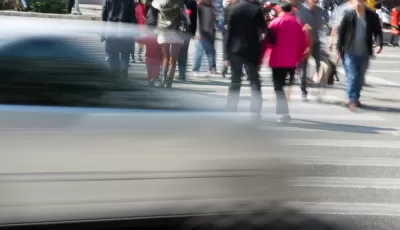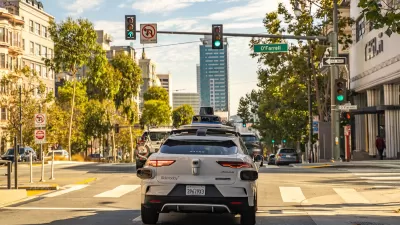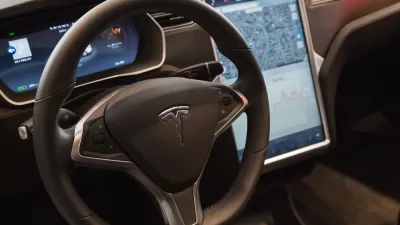With cars accelerating more quickly, drivers have less time to react and can pose more danger to pedestrians.

Car companies boast about the rapid acceleration of their vehicles. Tesla and electric rivals Rivian, Porsche, and Audi claim their vehicles can hit 60 miles per hour in two seconds. Writing in Bloomberg CityLab, Dan Albert asks, what does this mean for road safety?
Albert provides an illuminating history of the drive for acceleration and power in the car industry. While the muscle car is the quintessential example of that impulse, “EVs possess a big technical advantage over their gas-powered kin when it comes to acceleration.” As Albert explains, “Electric motors can generate all of their power from zero RPM, giving EVs their eye-popping acceleration figures, particularly at the lower end of the speedometer.”
The article goes on to explain why this poses a danger to pedestrians, particularly in urban areas. Albert acknowledges that “The degree to which extreme acceleration could be contributing to the surge in traffic deaths the US has been experiencing in recent years isn’t known; a slew of factors, including the growing popularity of oversized SUVs and pickup trucks, have combined to make American roadways disproportionately lethal, and the dangers that larger vehicles pose is dramatically magnified by speed.” But faster acceleration gives drivers a smaller margin of error, making it harder for a driver to react before a crash. “Safety experts have only begun to consider what this new generation of high-powered vehicles means for the passenger alighting from the bus or the pedestrian scurrying across the road.” While the auto industry is likely to resist regulation, technology such as geofencing that reduces vehicle speeds in certain zones can limit the negative impact of faster acceleration.
FULL STORY: Extreme Acceleration Is the New Traffic Safety Frontier

Planetizen Federal Action Tracker
A weekly monitor of how Trump’s orders and actions are impacting planners and planning in America.

Map: Where Senate Republicans Want to Sell Your Public Lands
For public land advocates, the Senate Republicans’ proposal to sell millions of acres of public land in the West is “the biggest fight of their careers.”

Restaurant Patios Were a Pandemic Win — Why Were They so Hard to Keep?
Social distancing requirements and changes in travel patterns prompted cities to pilot new uses for street and sidewalk space. Then it got complicated.

Albuquerque Route 66 Motels Become Affordable Housing
A $4 million city fund is incentivizing developers to breathe new life into derelict midcentury motels.

DC Area County Eliminates Bus Fares
Montgomery County joins a growing trend of making transit free.

Platform Pilsner: Vancouver Transit Agency Releases... a Beer?
TransLink will receive a portion of every sale of the four-pack.
Urban Design for Planners 1: Software Tools
This six-course series explores essential urban design concepts using open source software and equips planners with the tools they need to participate fully in the urban design process.
Planning for Universal Design
Learn the tools for implementing Universal Design in planning regulations.
Heyer Gruel & Associates PA
JM Goldson LLC
Custer County Colorado
City of Camden Redevelopment Agency
City of Astoria
Transportation Research & Education Center (TREC) at Portland State University
Camden Redevelopment Agency
City of Claremont
Municipality of Princeton (NJ)





























